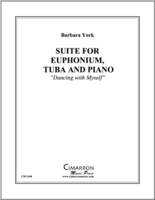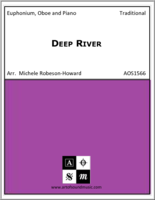Sonata No. 2
| Composer | York, Barbara |
|---|---|
| Duration | 14 |
| Ensemble | Euphonium and Piano |
| Genre | Modern Classical |
| Grade | 4 |
| Model Number | CM2326 |
| Category | Solo Euphonium |
"Sonata No. 2", for Euphonium and Piano, or Euphonium, Bass Clarinet and Piano.
"Barbara Yorks Second Sonata for Euphonium and Piano – ‘Tidings of Comfort and Joy’ is written in memory of Rev. Ryan Mathews (June 12, 1983-October 12, 2011), who died of complications from an automobile accident. The work also features an optional bass-clarinet part on the outer movements. The first movement, Plato's Cave, references Plato's famous dialogue, also known as Allegory of the Cave. This movement combines Plato's writing with Ryan's love of philosophy and his medical condition — Arthmgryposis Multiplex Congenita type 151 (AMC). AMC is a condition where the muscles are constricted tightly around the joints of the body, causing deformation and limited range of motion. In Ryan's case, he was also forced to use a wheelchair.
In Plato's story (written as a dialogue between Plato's brother Glaucon, and Plato's mentor, Socrates), Socrates describes a group of slaves who have been chained to the wall of a cave all of their lives. The prisoners are chained facing a wall, and not only are their arms and legs held in place, but also their necks and heads are fixed. They are compelled to gaze at the wall in front of them, forever. Behind them is an enomious fire, and between the fee and the prisoners is a raised walkway along which people walk. The prisoners cannot see anything behind them, but they watch the shadows cast by the passers-by. Socrates suggests the shadows would be perceived by the prisoners as real things. Later in Plato's writing, one prisoner is freed and allowed to leave the cave into the blinding sunlight. Eventually, the writing suggests, the freed-prisoner would acclimate to the ‘new reality.’ The freed-prisoner then returns to the cave, bringing his new take on reality to the prisoners who stayed behind. However, because the prisoner's eyes cannot see inside the cave (after having adjusted to the light), he is viewed as a fool among his peers.
The second movement, A Psalm of Peace, is a non-literal musical realization of Psalm 23 (the Lord is my shepherd, I shall not want…) and Psalm 121 (I lift my eyes to the hills – where does my help come from? My help comes from the Lord…). Just months before his death, Ryan had completed his master's of divinity from the Eden Theological Seminary of St. Louis with plans of becoming a minister. At his funeral, his ordination was posthumously conferred through the Disciples of Christ.
The driving Latin-charged third movement, White Lightning, represents the humor and spirit of Ryan, who was a people-magnet and often had everyone around him laughing hysterically. A seamless transition into the fourth movement is made by way of a cadenza that utilizes the major themes of the sonata. In the final movement, Epilogue, the love-theme from the first movement returns, bringing the work to an uplifting and resolving close. One of his professors at Eden Seminary said of Ryan, that he was fearless, very confident and that “his disability made him on fire to help others and eager to connect.” All who crossed his path knew this statement to be true."
Travis Scott, Summer 2013









